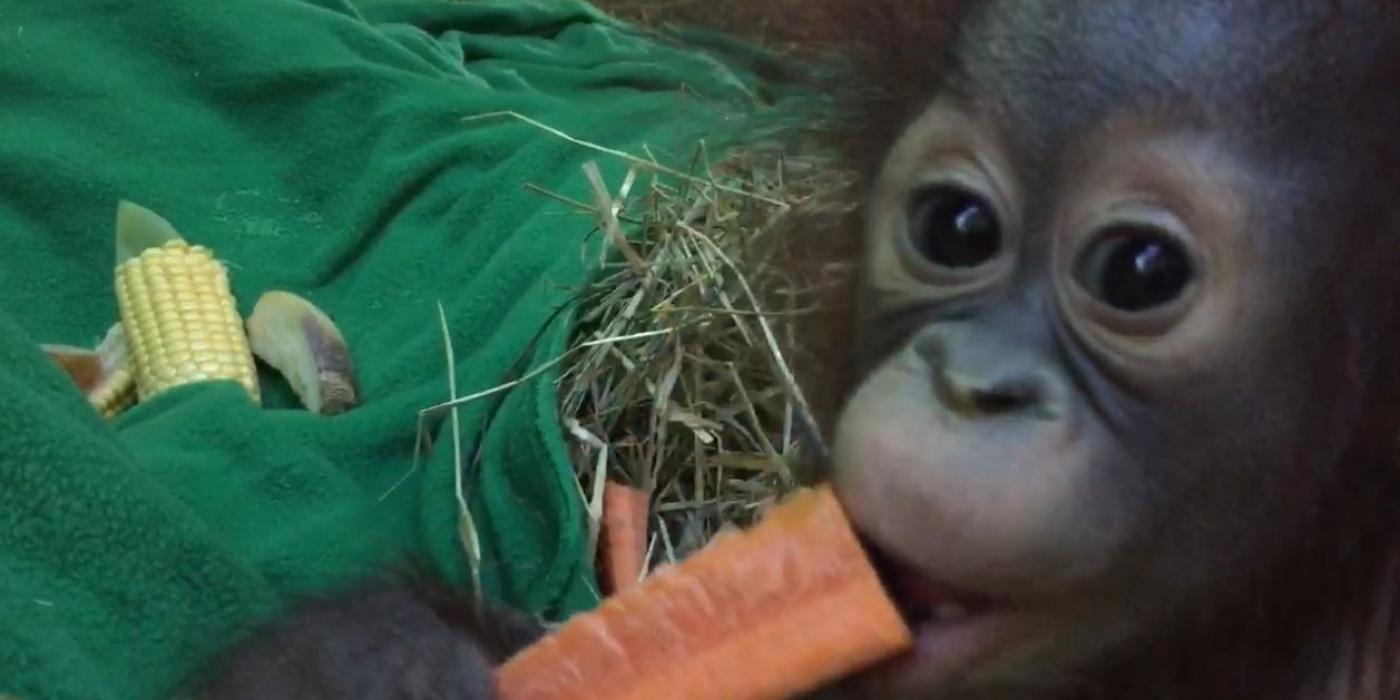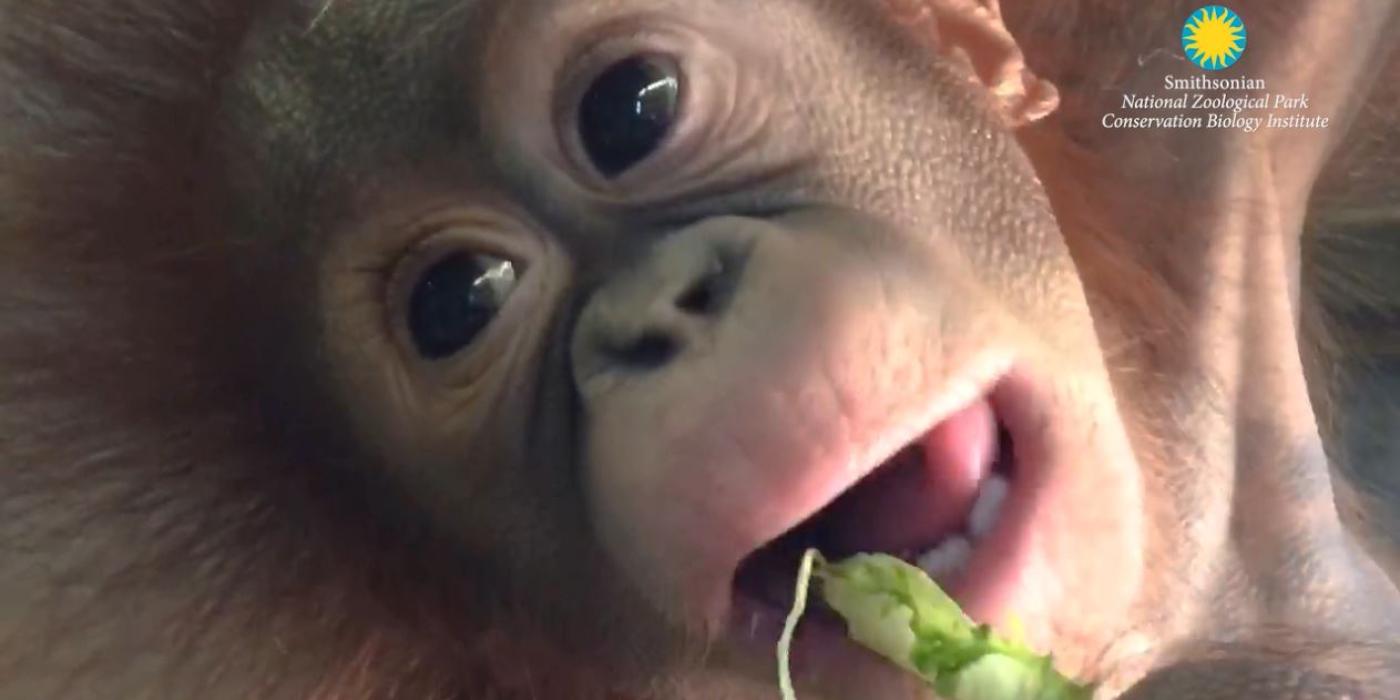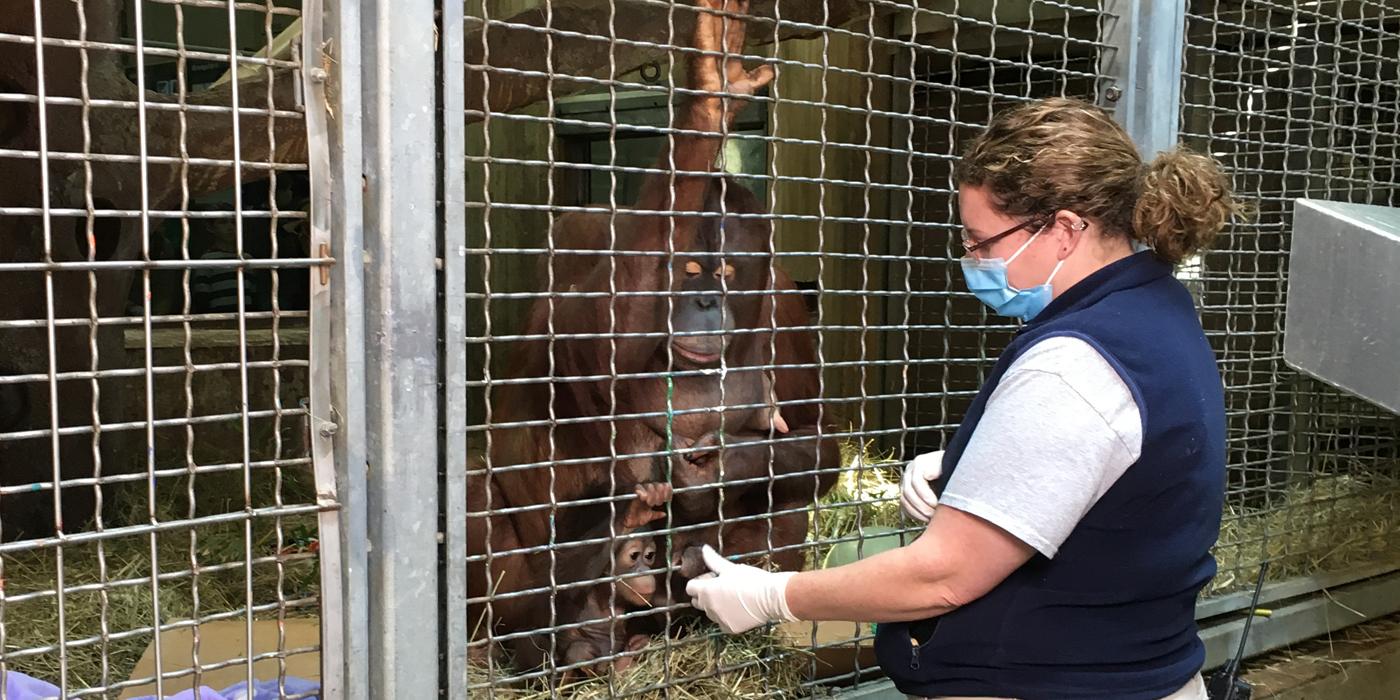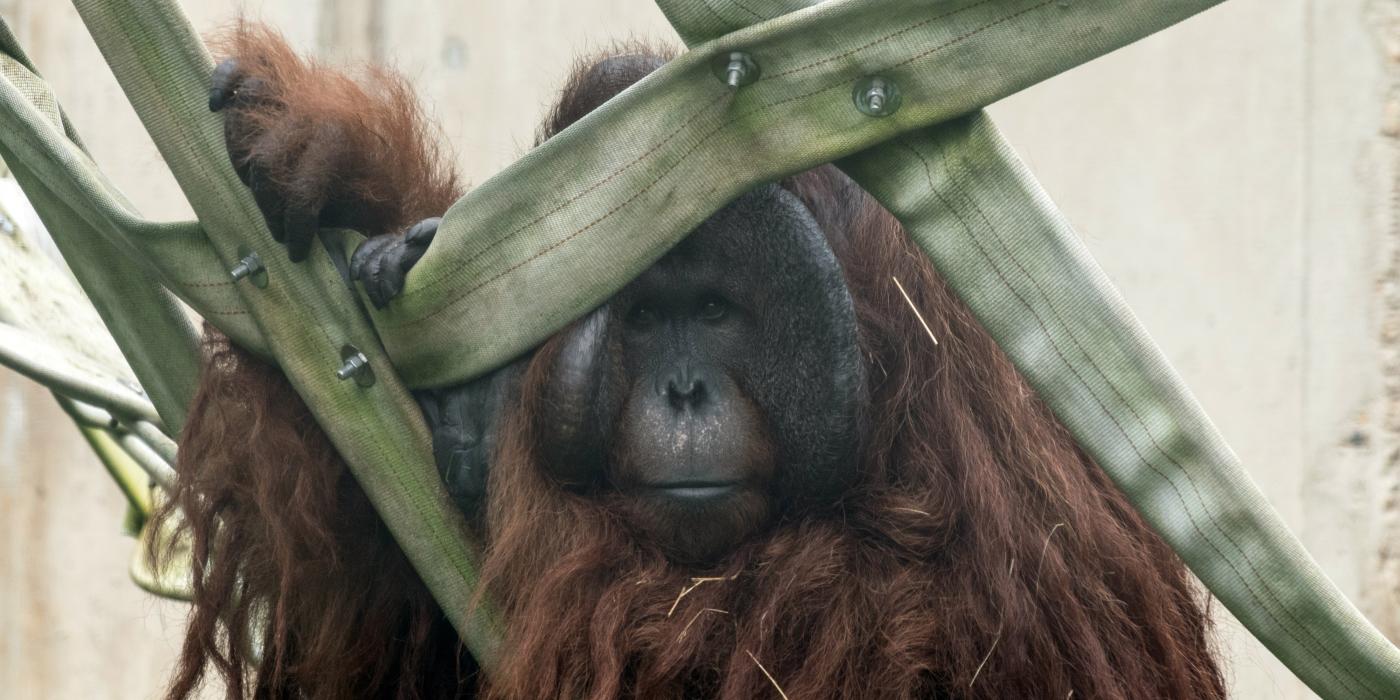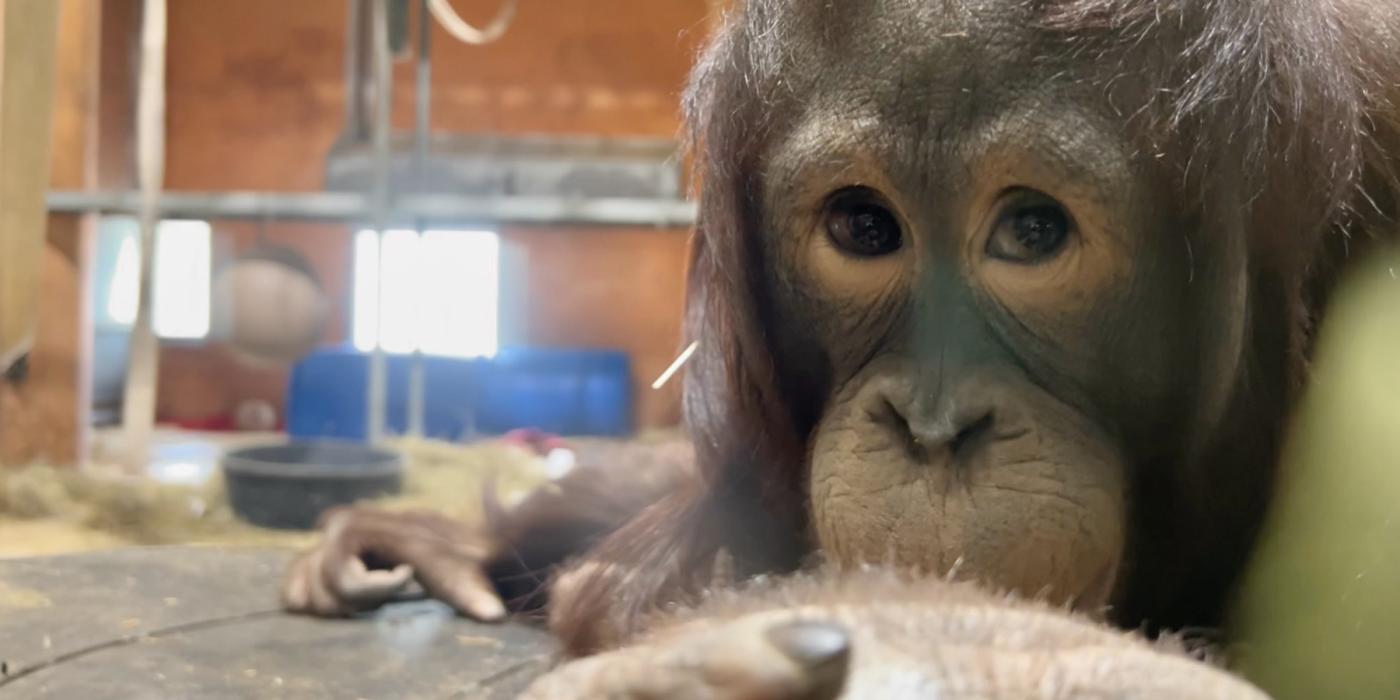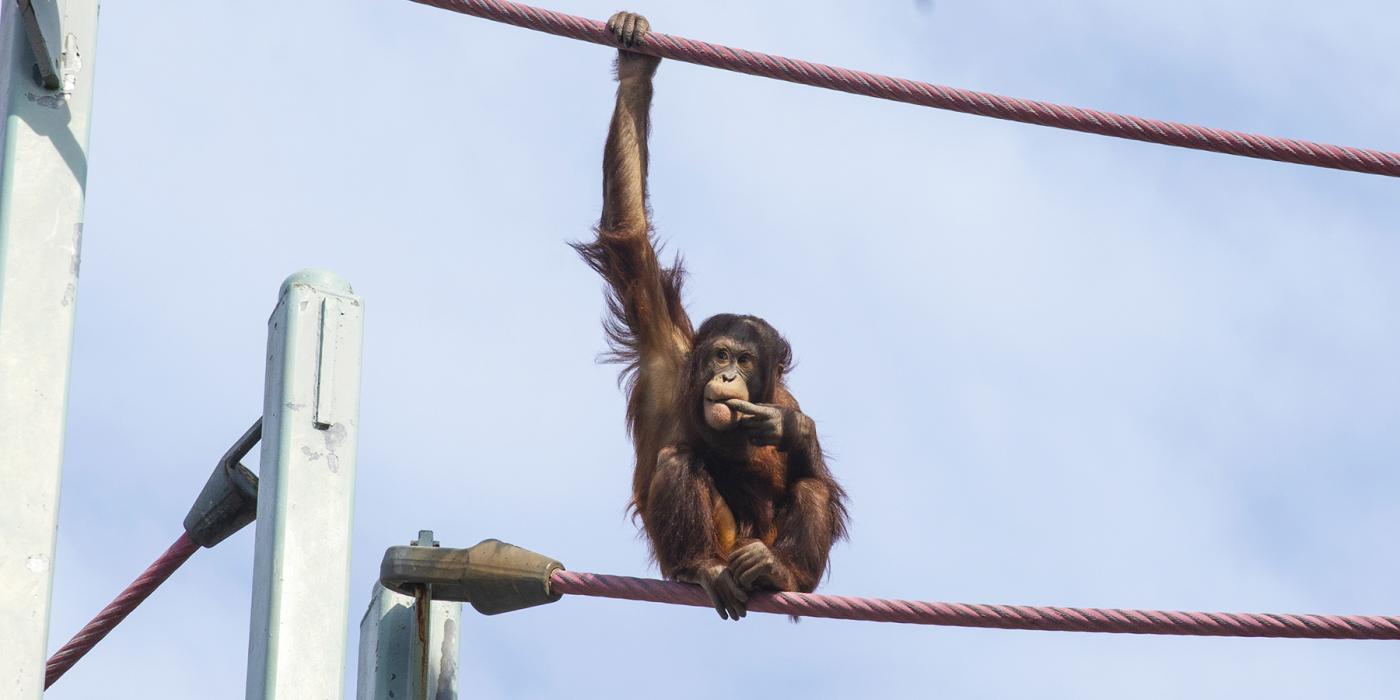Earth Optimism: Apes Helping Apes
What can an orangutan’s teeth tell us? Its age, among other things! Infant orangutans in zoos around the world—including our very own Redd—are helping their wild counterparts by simply showing keepers their chompers, say Primates curator Meredith Bastian and keeper Erin Stromberg. Documenting tooth development and sharing information with colleagues can help rehabilitation centers in Indonesia and Malaysia best provide care for young orangutans whose ages are otherwise a mystery.
Why teeth?
Just as with humans and other great apes, one can tell a young orangutan’s age just by looking at its teeth. Our Bornean orangutan infant, Redd, is approaching 7 months old and has already sprouted two upper and two lower deciduous teeth. But, how do we know if this is ‘normal’ for a male infant his age?
The truth is, there is very little documentation about orangutan tooth development. Felicity Oram of the Universiti Malaysia Sabah and the Kinabatangan Orangutan Conservation Program began her study—How Orangutans in Zoos Can Help Orphan Orangutans in Rehabilitation Centers and Wild Orangutans in Indonesia and Malaysia Just by Opening Their Mouths—as a direct way for young orangutans in the World Association of Zoos and Aquariums’ Species Survival Plan (SSP) to help their orphaned wild counterparts. Orangutans born in zoos have known birthdays, and keepers often keep track of milestones—including the ages at which deciduous and permanent teeth erupt.
How does studying orangutans in human care help wild orphans?
When a young orangutan arrives at a rehabilitation facility, veterinarians and field experts perform a checkup and offer their best guess of the animal’s age. However, the factors used to determine age are often inexact and inconsistent, especially if an animal arrives malnourished. The database Dr. Oram is collecting will help staff estimate ages with improved accuracy. This is essential for providing age-appropriate care as well as for assessing an orangutan’s readiness for reintroduction into the wild.
Rehabilitation facilities tend to be more like a zoo setting than the wild in some respects. In their native habitat, infant orangutans learn primarily from their mothers which foods to eat and how to eat them. In these centers, staff care for orphaned orangutans of all ages, so having a more accurate idea of their age helps staff select the most appropriate foods. And, just like in zoos, rehabilitation facilities offer medical care, and dental health is a good indicator of an animal’s overall health.
How does this study help fill in gaps for research in the field?
Wild orangutans spend most of their time at least 30 feet up in the trees. Researchers in the field can see front teeth and canines quite well with binoculars. Sometimes, especially when young ones are playing or trying new wild foods, field researchers can catch a glimpse of molars as well!
Though researchers keep track of their wild study subjects, they usually do not see them anywhere near as often as an animal keeper in a zoo. This means wild researchers often do not know the day or even the month an infant was born. Comparing notes between researchers and keepers enables us to better estimate ages of wild study subjects. This, in turn, helps us better understand wild maternal care and infant development to independence.
The information that we learn from orangutans, including Redd, can help caretakers at rehabilitation centers in range countries understand more about maternal care and how to use that knowledge to best provide for young orphans. We can use it to inform the best species-appropriate care for orangutans that live in zoos and serve as ambassadors of their species, too!
When did Redd’s teeth emerge?
Redd’s two lower incisors emerged when he was 4 months old, the left on Jan. 14 and the right on Jan. 25. Shortly after Redd turned 5 months old, his upper incisors emerged, the left on Feb. 15 and the right on Feb. 28. To the best of our ability, we track how they erupt in detail, noting when a tooth breaks the skin, when it grows, when it is fully emerged, when it is present, when it is missing/lost, or when something out of the ordinary has happened, such as a chip or crack.
What are the challenges of gathering data on an infant orangutan’s teeth?
Our adult orangutans participate in positive reinforcement training on a daily basis. The “open mouth” cue is one of the important behaviors that we train. It enables keepers to check the orangutans’ teeth, tongue and gums for any issues that may need addressing. Eventually, Redd will learn this behavior, but at the moment our priority is allowing him to bond with Batang.
Because Redd is not trained to open his mouth yet, we’re gathering information about his teeth as opportunities arise. When he teethes on enrichment items or the mesh of his enclosure, it makes it a bit easier for us to determine when a tooth is erupting. As he gets older, his attention span will increase and he will consistently eat solid foods—two conditions that are essential for a successful training session (the food being his reward for participating). Our ultimate goal is to track Redd’s tooth development throughout his infancy and adolescence until he has all 32 permanent teeth.
Related Species:

